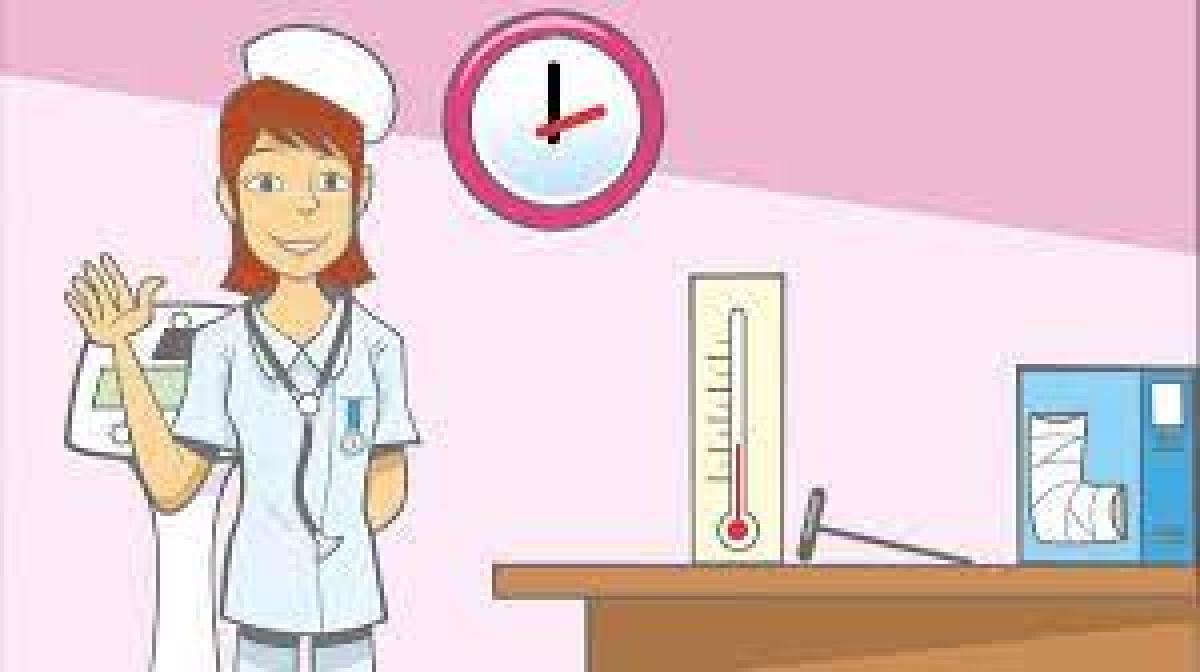Nurses typically assist doctors by asking you about your symptoms, taking your temperature and blood pressure, checking your weight, giving shots, and collecting blood or urine samples for lab tests.
He or she might start by checking your weight and height, as well as your blood pressure and maybe your temperature.
- Blood pressure – this shows how hard your heart is pumping blood throughout your body. A cuff that gets tighter and tighter on your arm is used to measure this. As the air drains out of the cuff, the nurse will watch the numbers to get your reading. Blood pressure can be too high or too low, but yours is probably just right!
- Body temperature – using a thermometer, the nurse can find out if your temperature is in the normal range (36.1-37.5 degrees Celsius). If it is higher, it means that you have a fever and your body is working to fight off an infection.
The nurse may also check your hearing and vision (eyesight). If you have trouble with either one of these, you might need to see a hearing specialist or an optician (or even eye doctor).
The nurse then might ask you to go to the bathroom and give some urine (pee) in a cup. Urine can give clues about whether something is wrong with the way a person’s body is working. But usually, the nurse tests your pee and says everything is fine.
All of these numbers, measurements, and test results will go into your medical chart, so the doctor can look them over.
As well as at the GP’s surgery, you’ll also find nurses:
- At your school – school nurses certainly see their share of kids with stomach aches, chickenpox, nosebleeds, and bumps and bruises. But they also have the important job of promoting good health. How do they do it? School nurses do vision, hearing, and scoliosis screenings and teach kids how to take care of themselves through good nutrition, exercise, and hygiene. They also help kids with special conditions, like diabetes, by teaching them about their condition and monitoring them.
- At the hospital – hospital nurses provide round-the-clock patient care. They monitor a patient’s vital signs, give medicine, draw blood, insert IVs, and work closely with doctors and families to keep everyone up to date on a patient’s condition. Some nurses even work in the operating rooms alongside the doctors.
- In your neighbourhood – some nurses work directly in the community. These nurses teach people with special health problems like diabetes or asthma how to manage their conditions. They also might travel to a person’s home to provide care for those who are too elderly or sick to leave.
Whatever type of work they do, the best nurses have one thing in common: they love interacting with people. That’s because nurses do more than provide hands-on health care. They also give patients and their families compassionate support at a time when they need it most. Nurses are educated to care for the whole person, not just treat whatever health issue somebody has.
Things to look out for in the nurse’s clinic:
- Weighing scales
- Hammer
- Thermometer
- Bandages
- Upside down clock
- Stethoscope
.
> Visit Professor Hallux’s Map of Medicine homepage
Images courtesy of the Wellcome Trust
Professor Hallux’s Map of Medicine
Find out how to navigate Professor Hallux's Map of Medicine
More From Professor Hallux’s Map of Medicine



